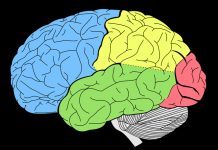Based on the research held on 1500 ( of people ages between 20 to 90 years) people’s brain scans, scientists found that people with older-looking brains have been linked to lower birth weight and genes for smaller brains compared to the ones with normal aging brains. You can witness these two factors in the present life and it represents that one’s age is mostly related to early life events and not related to influences to be held in the future.
Researchers in the field of brain science and aging are inquisitive in measuring the health of a brain in a single observation and the most popular method to measure it is called “brain age.”
Brain Age – This method is also used to detect and follow-up the individuals who are at risk of dementia and cognitive problems. Brain age experiment helps to estimate the age of the brain with the help of a brain scan. It can be found by comparing it with the person’s actual age in order to determine whether the brain of the person is aging faster or slower when compared to their actual age.
People’s brains do not have to be the same as their actual age. It can either appear older or younger than their own age. Researchers found that people with older-looking brains have accelerated brain aging. It shows that their brains age faster than usual. According to the brain scan, the older looking brains are more likely to look smaller with bigger ventricles and thinner cortex. On the other hand, the study demonstrates that a single brain scan is unable to predict brain age. A single brain scan usually reflects the early-life conditions.
The researchers held a study on 1500 individuals of ages 20 to 90 years by scanning their brains on a regular basis for more than 10 years. They held this study to measure the pace of brain aging.
- At first, the researchers found that the estimated brain age did not get associated with actual aging. They concluded that a single estimate of brain age cannot describe how an individual’s brain will grow or change over time.
- On the second, they found that older-looking brains have been linked to lower birth weight and genes to have smaller brains, bigger ventricles, and thinner cortex compared to the one with normal aging brains.
The research concludes that the individual’s brain age is based on the early-life influences on the brain structure and only a very small portion reflects the changes in brain structure during middle and late adulthood.


















